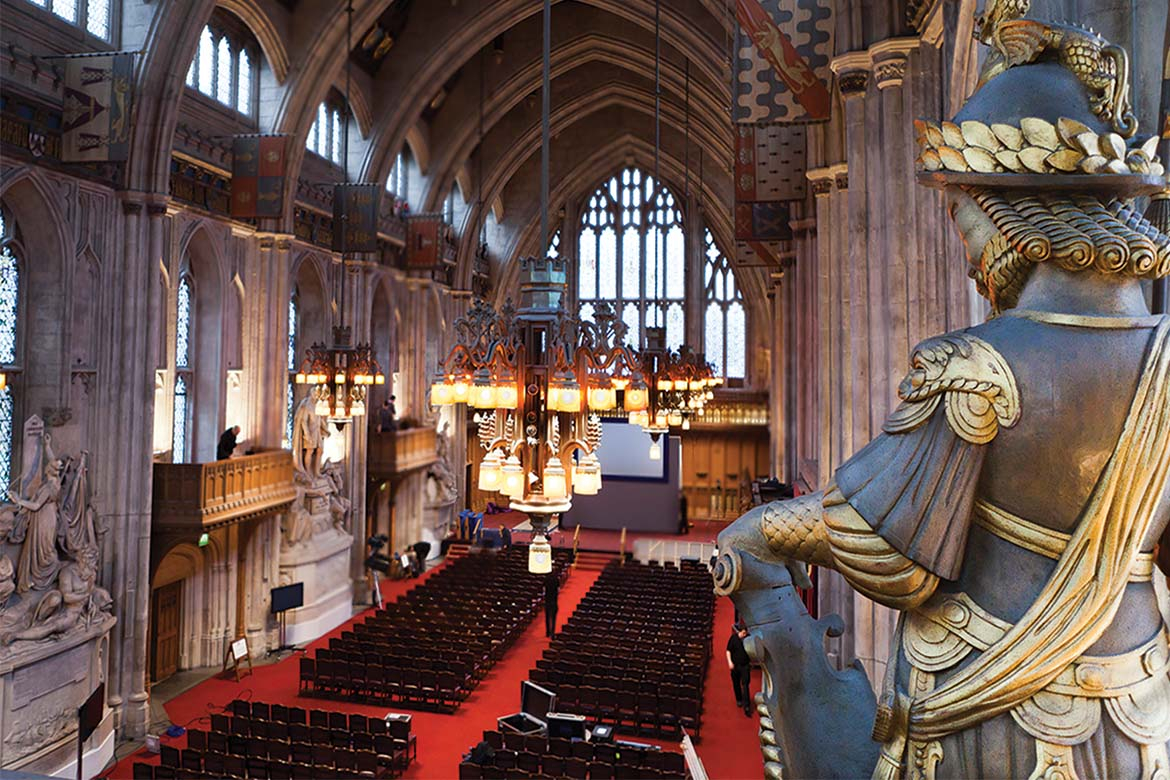Fire detection for high value prestige property in the City
Providing effective fire detection for the City’s commercial properties is a challenge, with the key issues being aesthetic considerations and monitoring voluminous spaces. The City’s historic legacy is still visible in properties such as the Mansion House and Guildhall. Perhaps surprisingly, these irreplaceable historic properties share many of the same challenges as modern constructions to implement effective fire detection.
The amazing creativity of architects worldwide has led to a surge of modern buildings that have quickly gained iconic status. The Gherkin is just one illustration of a high value property with a completely original and unique design. These commercial properties need to not only ensure safety but also project a faultless image for their clients.
It might appear that heritage buildings have little in common with the issues of modern constructions. Surely, a building such as London’s Guildhall, built in 1411, has different considerations?
Many heritage properties must adhere to the demands of their listed status: an unobtrusive system that does not compromise the historic and aesthetic integrity is required. Stone facades and ornate decoration limit the options, as even drill holes are forbidden.
Modern buildings
A number of solutions are possible, including recreating original light fittings to provide a discreet home for visual detectors or hiding them in wooden structures. Modern buildings owners share this requirement and want detectors to be unobtrusive. Generally, there are numerous opportunities for cameras to be hidden, such as above the ceiling with a cut out for the camera lens.
The voluminous, often unusual, spaces created by new designs present their own set of challenges The Gherkin, for example, has a lobby that reaches 6.5 metres and has 6 light wells with a depth of 25m. Such spaces can be challenging for fire detection, especially in relation to smoke stratification.
Smoke stratification occurs when air containing smoke particles from the fire source is significantly hotter than the surrounding air, making it less dense and effectively buoyant. This air rises and as it rises it cools. When the building height allows, the smoke’s temperature will cool to a point where it no longer is sufficient to displace the air above it and as a result the smoke levels out and hangs in the air.
When smoke stratification occurs the smoke particles never reach ceiling mounted detectors, so any technology that relies upon air sampling will fail to detect the fire.
Moreover, air flow behaviour can vary greatly in voluminous areas, and so complex and sometimes unpredictable smoke behaviour must be addressed when selecting any fire detection solution.
Fire detection solutions
The main fire detection solutions for high value properties are Visual Smoke Detection (VSD), Infrared (IR) and Aspirating Smoke Detectors (ASD). ASD has heightened sensitivity and is ideal for giving early warnings, being especially effective for situations where fires are not yet visible or in the very earliest stages.
VSD offers high value property buildings a system that can detect fire at source, without sensors having to be triggered. Using visual monitoring, large voluminous areas can be surveyed, focusing on areas of particular concern if required. The challenges of smoke stratification are significantly reduced.
The system works by detecting smoke patterns as well as changes in brightness, contrast, shape, motion, colour matching, content and loss that could indicate the early stages of a fire. Visual verification, on or off site, can determine the response required.
The key to a successful solution is not centred on compromise, but on a creative approach balanced with the most effective fire detection solution.
Rob Turner FireVu


